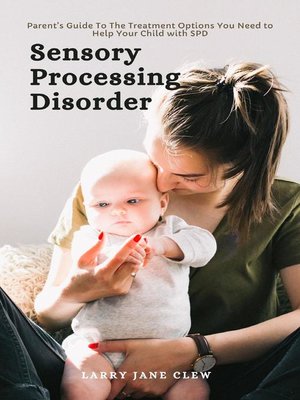Sensory Processing Disorder
audiobook (Unabridged) ∣ Parent's Guide To The Treatment Options You Need to Help Your Child with SPD
By Larry Jane Clew

Sign up to save your library
With an OverDrive account, you can save your favorite libraries for at-a-glance information about availability. Find out more about OverDrive accounts.
Find this title in Libby, the library reading app by OverDrive.



Search for a digital library with this title
Title found at these libraries:
| Library Name | Distance |
|---|---|
| Loading... |
Sensory processing disorder is a disorder where the brain has trouble getting and giving an answer to information that comes in through the senses.
This is book explains Sensory Processing Disorder (SPD) in a simplified and precise way, and presents a drug-free approach that provides expect parents.
Cravings for sensation? The "sensory craver" never gets enough of certain sensations, e.g., messy fun, spicy food, noisy action, and perpetual movement.
Poor sensory discrimination? She might not sense the difference between objects or experiences—unaware of what she's holding unless she looks and struggling to sense when she's falling or how exactly to catch herself.
Unusually high or low activity level? The kid could be constantly around the go—wearing out everyone around him—or move slowly and get tired easily, showing little desire for the world.
Some individuals with sensory processing disorder are oversensitive to things in their environment. Everyday noises or mind-boggling may hurt. The light touch of the t-shirt may chafe their skin.
Others with sensory processing disorder may:
Be uncoordinated
Bump into things
Be hard to respond or react during play
Sensory processing problems are usually recognized in children. However, they can also affect adults. Sensory Processing Disorders are generally observed in developmental conditions like autism spectrum disorder. Sensory processing disorder is not just named a stand-alone disorder. Many experts believe that should change. This book offers simplified, clear information for parents and professionals—and a drug-free remedy approach for children.
This is book explains Sensory Processing Disorder (SPD) in a simplified and precise way, and presents a drug-free approach that provides expect parents.
Cravings for sensation? The "sensory craver" never gets enough of certain sensations, e.g., messy fun, spicy food, noisy action, and perpetual movement.
Poor sensory discrimination? She might not sense the difference between objects or experiences—unaware of what she's holding unless she looks and struggling to sense when she's falling or how exactly to catch herself.
Unusually high or low activity level? The kid could be constantly around the go—wearing out everyone around him—or move slowly and get tired easily, showing little desire for the world.
Some individuals with sensory processing disorder are oversensitive to things in their environment. Everyday noises or mind-boggling may hurt. The light touch of the t-shirt may chafe their skin.
Others with sensory processing disorder may:
Sensory processing problems are usually recognized in children. However, they can also affect adults. Sensory Processing Disorders are generally observed in developmental conditions like autism spectrum disorder. Sensory processing disorder is not just named a stand-alone disorder. Many experts believe that should change. This book offers simplified, clear information for parents and professionals—and a drug-free remedy approach for children.







